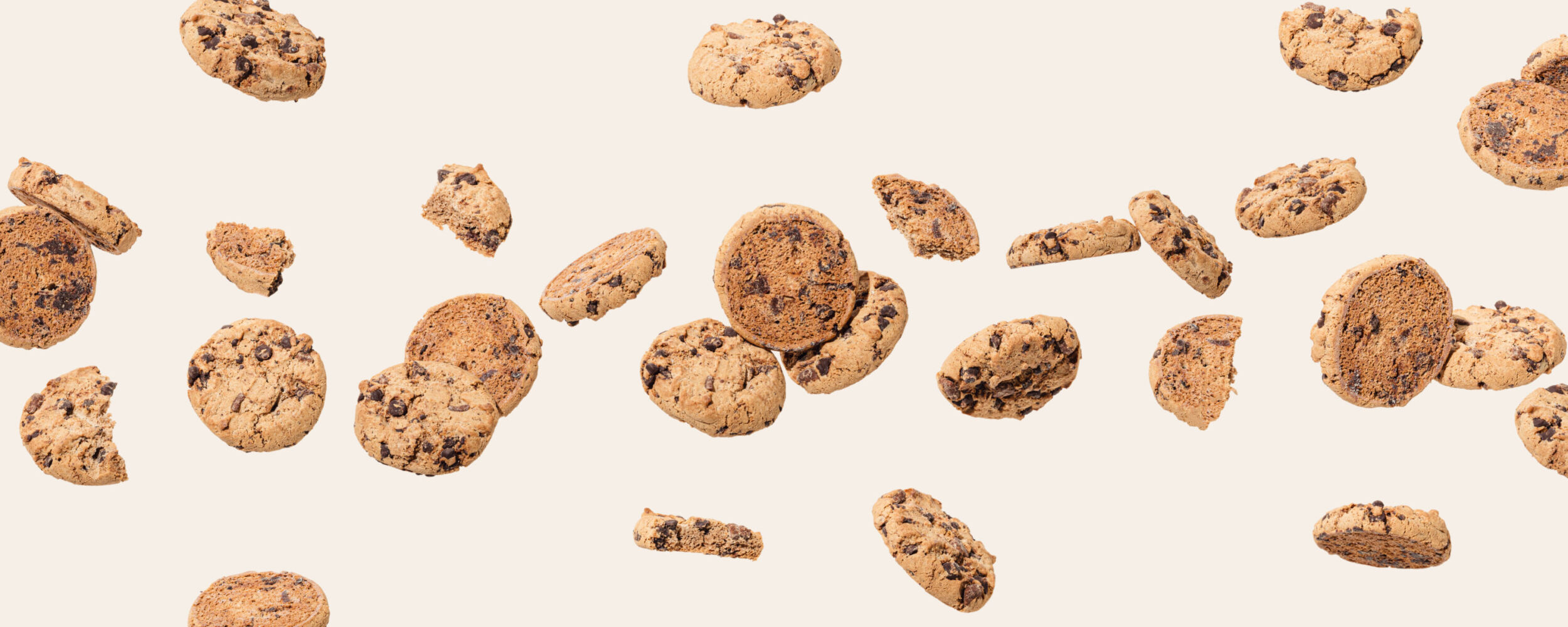
How the end of third-party cookies opens the door for direct mail
You may have heard marketers whisper about the “cookie-pocalypse”: the end of third-party cookies. They’ve been a vital tool in the digital marketing arsenal since 1994, but why are they being restricted, and how can physical mail steal the spotlight in their absence?
Which cookies do what?
Cookies are files stored on your device that help with tracking. There are two main types that are the most used in browsing.
First-party: Cookies set by the website you are on; predominantly used for personalising sessions or saving preferences. They can provide key functionality on a website and aren’t considered invasive.
Third-party: These come from domains outside of the one you are visiting. Coming from embedded tools, brands use them to understand your purchasing habits.
Why are third-party cookies being restricted?
Third-party cookies allow for users to be tracked across the web, collecting data so that a profile can be built to offer them a better browsing experience and tailor content. The problem is that they don’t know who is gathering their data.
Google announced they would phase out third-party cookies on their Chrome browser by 2025 but have paused a total depreciation of them to implement a new experience that lets people make an informed choice that applies across their web browsing. However, they remain in talks with regulators and it’s unlikely the notion has completely disappeared.
Online shoppers have become increasingly tech savvy and are cautious about what data they’re giving out: 37% of global web users have adopted ad blockers to protect their data[1]. Browsing can involve personal items, and the collection of that data could be leveraged against individuals or used by hackers to access personal information. More stringent legislation has been brought in across Europe and the US to protect consumers’ data.
Websites must detail what the data will be used for and how long it will be held, as well as allowing users to opt-out. One area that has hit marketers hard is that websites must now ask for explicit consent from a user for their data to be tracked. Tech giants have started to transition towards a cookieless future to not fall foul of these.
How will this affect digital marketing?
With this death knell for the cookie, why haven’t you read thought pieces about the end of digital marketing, whilst terrified agency executives retrain in practical trades? Because there are alternatives.
The loss of third-party cookies means marketers will need to rely on first-party data instead. This is fine for existing customers and website users that you have data for, but what about those who’ve opted out of first-party cookies, or prospects who haven’t visited your website yet?
47% of customers are more likely to share data with businesses if they feel it adds value[2], but this means time and money spent on online surveys, newsletters and value-exchange content.
And that still relies on users willingly handing over their data. Only 56% of users say they always accept cookies[3], meaning that you’ve already lost a massive chunk before you’ve even begun. 22.6% of consumers reported habitually (always or most of the time) opting out of first-party cookies on financial services websites, 21% on retail sites and 18.7% on travel sites[4].
With this loss of data, banners, emails and other targeted digital communications will become less personalised, as marketers have no choice but to try and catch as broad a range of people in their net as possible. This is particularly challenging for B2B, where System1 research shows that 75% of B2B ads are already ‘ineffective’, in part because of its inability to make an emotional connection. This only gets trickier with less personalisation!
And all of this will contribute to the transient nature of email marketing. Make a note of how many emails you get as Black Friday beckons. We bet you’ll mark most as spam or delete straight away, compared to the handful of direct mailers you receive for the same event, which could still be on the kitchen table long after the sales have passed.
And this is why direct mail can still excel.
The tangibility of something arriving on your doormat means that you can have a lasting impact on consumers and businesses alike who will read, handle, and refer to your messaging once it’s in their hands. The loss of personalisation of digital marketing means that you need another way to cut-through and direct mail can do just that.
Why physical mail will still have an impact
Physical mail finds itself in the position of being, once again, novel. Inundated with digital spam, people find a physical item quirky and quaint, and this is advantageous.

Physical mail can cut through like nothing else:
Tangibility: The experience of physically handling something offers a dynamic experience over just reading a message. It increases engagement and helps foster a positive overview of your brand. This is shown by the read rates of physical mail increasing from 72% in Q2 2022 to 74% in Q2 2023, with retention rates in the home going from 44% to 46% in the same period [5].
Trust: The main issue with cookies has proven to be the safety and security of how data is being handled. This is why tech companies are turning away from them, but direct mail doesn’t suffer from this. It’s a highly trusted channel with 71% of people saying that they completely trust the mail they receive[6].
Engagement: Physical mail is typically interacted with between 3 and 5 times, with its effectiveness reaching a six quarter high by Q2 of 2023. It also recorded a 30% increase of driving footfall in stores in Q2 of ’23.[7]
Sustainability: It may not feel intuitive that physical mail can be more environmentally sound than digital mail, but the carbon cost of an email to printed paper is actually higher per sale[8]. Email storage requires server energy and electricity, so a single text-based email emits 4g of CO2e (carbon dioxide equivalent)[9]. Physical mail can be printed in a sustainable manner using plant-based inks, sustainable papers and more. We’ve covered how direct mail can be green in a previous blog.
Reaping the rewards of out the box thinking
Cutting through the crowded marketing landscape is no easy task. Direct mail can go a long way to assisting with that and, with the restriction of third-party cookies, physical mail could have a positive impact on your customers and be beneficial for your organisation’s data collection.
Not to toot our own horn, but The Creative Consultancy has won 2 Grand Prix Awards for achieving serious cut-through with our direct mail campaigns. Want us to do the same for you?
Get in touch to see how we can help you achieve innovative and effective marketing through physical and digital channels.
[1] Hootsuite, Kepios, https://www.hootsuite.com/resources/digital-trends, 2022
[2] Michael Feeley, NewDigitalAge, https://newdigitalage.co/general/consumers-more-willing-to-share-data-in-2022-finds-study/#:~:text=The%20majority%20of%20consumers%20(47,clear%20benefit%20for%20doing%20so. 2022
[3] Duncan MacRae, MarketingTechNews, https://www.marketingtechnews.net/news/56-of-uk-consumers-always-accept-cookies-without-thinking/#:~:text=Despite%20the%20well%2Dpublicised%20risks,experience%20tends%20to%20trump%20security., 2023
[4] Statista, https://www.statista.com/statistics/1453901/consumers-likelihood-opt-out-first-party-cookies-uk-website-type/, 2024
[5] JICMAIL, https://www.jicmail.org.uk/news/news-q2-2023-results-questions-over-whether-the-embattled-british-high-street-is-making-the-most-of-the-mail-channel-as-mail-effectiveness-reaches-a-six-quarter-high/, 2023
[6] Marketreach, https://www.marketreach.co.uk/resource/mail-trusted, 2024
[7] JICMAIL, https://www.jicmail.org.uk/news/news-q2-2023-results-questions-over-whether-the-embattled-british-high-street-is-making-the-most-of-the-mail-channel-as-mail-effectiveness-reaches-a-six-quarter-high/, 2023
[8] Data and Marketing Association, https://dma.org.uk/article/why-email-and-digital-activity-is-not-always-the-greener-option, 2022
[9] eCo2Greetings, https://www.eco2greetings.com/News/The-Carbon-Footprint-of-Email-vs-Postal-Mail.html, 2021